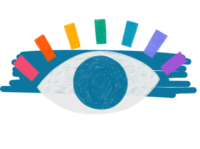Skip to content
- Assessment and Diagnosis: Comprehensive evaluation to diagnose and determine the extent of the obstruction in the nasolacrimal duct.
- Treatment: Non-surgical management, such as massage and antibiotics, or surgical intervention like nasolacrimal duct probing or balloon dilation.
- Follow-up Care: Monitoring the progress and ensuring the resolution of the obstruction.
- Diagnosis: Accurate diagnosis of cataracts in children through a detailed eye examination.
- Surgery: Performing pediatric cataract surgery to remove the cloudy lens and, if necessary, implanting an intraocular lens (IOL).
- Visual Rehabilitation: Providing post-operative care and visual rehabilitation, which may include eyeglasses or contact lenses.
- Evaluation: Comprehensive assessment of eye misalignment and associated visual issues.
- Treatment: Offering various treatments, including eye exercises, patching, glasses, or surgical correction to align the eyes properly.
- Long-term Management: Follow-up appointments and ongoing care to ensure proper eye alignment.
- Diagnosis: Conducting comprehensive eye examinations to diagnose astigmatism in children. This may involve measuring the curvature of the cornea and assessing visual acuity.
- Treatment: Providing treatment options based on the severity of astigmatism. This can include eyeglasses or contact lenses designed to correct the irregular curvature of the cornea, thus improving vision.
- Prescription Eyewear: Offering customized eyeglass prescriptions to correct astigmatism and ensure clear, comfortable vision for the child.
- Contact Lens Fitting: For older children or teenagers, fitting and prescribing contact lenses for astigmatism, if they prefer this option.
- Diagnosis: Identifying and diagnosing amblyopia in children.
- Treatment: Implementing treatment modalities such as patching the stronger eye, atropine drops, or vision therapy to strengthen the weaker eye.
- Monitoring: Regular follow-up visits to assess progress and make necessary adjustments.
- Assessment: Thorough evaluation to identify the cause of double vision in children.
- Treatment: Depending on the underlying cause, treatment may involve vision therapy, prism glasses, or surgical correction.
- Rehabilitation: Helping children adapt to their condition and improve their quality of life.
- Comprehensive Eye Exams: Conducting eye exams to determine the degree of hyperopia or myopia.
- Prescription: Providing appropriate eyeglasses or contact lenses to correct refractive errors.
- Education: Offering guidance on the management and potential progression of these conditions.
- Diagnosis: Identifying the cause of conjunctivitis (viral, bacterial, allergic) and determining its severity.
- Treatment: Prescribing appropriate medications, eye drops, or ointments to alleviate symptoms and treat the underlying cause.
- Preventive Measures: Educating parents and patients on hygiene and preventive measures to avoid recurrence.
